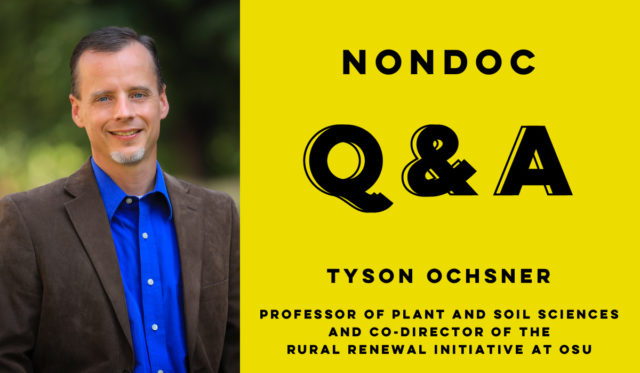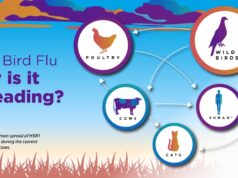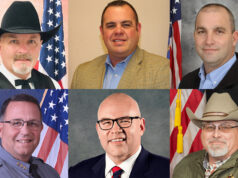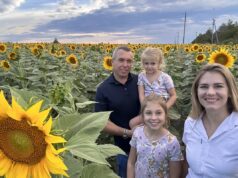
More than 1.3. million Oklahomans live in rural areas, according to data from the United States Department of Agriculture. Though that number accounts for almost a third of the state’s population, rural communities have faced a number of emerging challenges in recent decades as populations and resources have shifted to more urban areas.
Everything from education to internet access to health care comes with special hurdles in many rural communities, and in the past couple of years, Oklahoma State University’s Rural Renewal Initiative has been seeking to find innovative ways to knock down some of those obstacles.
Tyson Ochsner, a professor of plant and soil sciences at OSU, serves as one of the co-directors of the initiative, along with colleagues who specialize in education, agricultural engineering, and health care.
A native Oklahoman, Ochsner attended OSU as an undergraduate and then earned his doctorate at the Iowa State University and worked for the USDA before returning to OSU as a professor. The main aim of his work now is “to discover and communicate new ways to enrich and protect people’s lives through improved monitoring of soil water and more effective use of soil water information,” according to his faculty bio.
Ochsner recently answered some questions about his career path and the aims and achievements of OSU’s Rural Renewal Initiative.
The following conversation has been lightly edited for style and clarity.
Tell us about yourself. Where are you from? How did you get interested in rural issues?
I grew up on a third-generation family farm in southwest Oklahoma, near the town of Chattanooga. There were 16 students in my graduating class, so rural people and places are a big part of my background.
Most kids don’t grow up wanting to be soil scientists. When did you get interested in the field and what drew you to it?
Growing up on a non-irrigated farm in a drought-prone region gave me some early appreciation for the importance of soil and water. That interest was enhanced during junior high and high school through my participation in land-judging contests and natural resources speech contests through FFA and other organizations.
I went to college at Oklahoma State University, where I initially studied engineering, but the “nuts and bolts” parts of that were not a good fit for me. About that time, OSU started a new interdepartmental major in environmental science. That better suited me, providing a strong education in math and science, while allowing me to focus much of my classwork around soils and hydrology.
After completing my undergraduate degree, I studied soil science and water resources at Iowa State University for five years under Dr. Robert Horton, who specialized in a discipline called soil physics. My wife is from Iowa, so it was great for us to be there in Ames together as newlyweds. Dr. Horton’s mentorship during that time helped solidify my career trajectory in soil science, because he showed me the opportunities it provided to make a difference through research, teaching and faithfully serving others.
Is there anything special or unusual about the soil and plants in Oklahoma, or anything you find particularly interesting about them?
I think the wide variety of soils, vegetation and climate across Oklahoma are fascinating. We’ve had the opportunity to work in shortgrass prairie near Kenton, out in the Panhandle, where the average annual rainfall is about 16 inches, and we’ve worked in a loblolly pine plantation near Broken Bow, in far southeast Oklahoma, where the rainfall averages about 59 inches per year. Our team has sampled soils in every county in the state, and the diversity of soil textures and soil colors here continues to surprise me.
How did OSU’s Rural Renewal Initiative get started, and what exactly does the initiative do?
The Rural Renewal Initiative started in 2019 in response to an idea competition launched by Dr. Kenneth Sewell, the vice president for research at OSU. He challenged faculty to put forward ideas for interdisciplinary research initiatives designed to address pressing societal needs. Several faculty members could see that many rural communities in Oklahoma and beyond were facing major challenges, including declining populations, aging or inadequate infrastructure, and environmental challenges.
Yet these communities also have inherent strengths, including their ingenuity and their connections to the land and to each other. There are clearly tremendous research needs and opportunities connected with these rural issues. But none of us felt qualified to tackle such complex and wide-ranging challenges. We were stuck. I think what finally moved us to action was faith and love. We had faith that this is what we’ve been called to do, we love the topics that we get to work on, and we love the people we get to work with. That includes the people we work with in our focus communities and our OSU teammates.
The Rural Renewal Initiative is led by a team of co-directors including myself and Shane Robinson, who brings expertise in education, Paul Weckler, who brings engineering expertise, and Mark Woodring, an expert on rural health care. Other key team members include our assistant director, Audrey King, and our grant writer, Devon Hill.
Together, we are working to catalyze the renewal of rural communities and places in Oklahoma and beyond through interdisciplinary research, student mobilization and community engagement.
Toward that end, we recruit and train “rural scholars,” which are OSU students who live and work in rural communities during the summer, conducting research and providing community service. We also lead an annual seed grant competition for OSU researchers, which allows us to get some of the university’s best and brightest researchers engaged with these rural communities. Then, each fall, we organize a Rural Renewal Symposium that features rural research from around the world and that culminates in the awarding of the Rural Renewal Research Prize and Rural Renewal Citizenship Prize. Hearing from those prize winners is always a highlight.
Rural communities all over the country are facing challenges. Are there any issues that are unique to Oklahoma or particularly acute here?
Yes, rural communities in many places are facing challenging times, so one key question for us was where to begin.
One part of the answer was to consult the data. There are over 3,000 counties in the U.S. Based on the latest data from the USDA Economic Research Service, we identified counties that were facing stress from low education levels, low employment, population decline, persistent poverty and persistent child poverty.
Only 38 counties in the entire U.S. are facing all five of those stressors. Two of those are in southwest Oklahoma — Harmon and Tillman counties.
As it turns out, Shane is from Harmon County, and I’m from Tillman County. We had good relationships in those communities already. These were the logical places for us to start, so they became our initial focus counties.
Another unique challenge these communities face is drought. In recent years, southwest Oklahoma and adjacent parts of Texas have experienced some of the most severe and prolonged drought conditions in the nation. As the climate changes, those droughts may intensify. So drought is an issue that I can connect with as a researcher, and we are working to better understand drought severity and impacts in the region and to develop better drought forecasting and mitigation systems for the people there.
If you could wave a magic wand and instantly implement one intervention to help rural Oklahoma, what would it be?
Well, it’s not magic, but one of our first research seed grants went to a team led by Mark, and they’ve had some dramatic success by equipping rural ambulance crews with enhanced telemedicine capabilities. Many rural hospitals have closed because of financial strain, resulting in dangerously long transit times for people experiencing medical emergencies, as the ambulance has to carry them to a hospital in another county.
With the new system Mark’s team has established in Tillman County, the ambulance crew can be connected via audio and visual link to an emergency room physician in Tulsa at the touch of a button. The physician can then help direct the care of the patient in transit.
Recently, the crew had nearly lost a patient in route, and with the help of the physician through the telemedicine system, they were able to save that person’s life. I’d love to see that system in place in every rural community without a nearby hospital.
Your work obviously has a lot to do with growing plants. Does that translate to having a green thumb? Do you grow things yourself?
Great question. No, I’m terrible. I can’t grow anything well except for weeds! Some of my kids will hopefully be better gardeners than me. My father-in-law, on the other hand, grows the best tomatoes you’ll find anywhere.





















